Science
Related: About this forumEmerging PFAS Pollutants at a Lithium Battery Recycling Plant.
The paper I'll briefly discuss in this post is this one: Nontarget Analysis of Legacy and Emerging PFAS in a Lithium-Ion Power Battery Recycling Park and Their Possible Toxicity Measured Using High-Throughput Phenotype Screening Zenghua Qi, Yutian Cao, Dan Li, Chenguang Wu, Kaihan Wu, Yuanyuan Song, Zeji Huang, Hemi Luan, Xiaojing Meng, Zhu Yang, and Zongwei Cai Environmental Science & Technology 2024 58 (32), 14530-14540.
For a long time around here and in many other places around the world, the absurd lie that energy storage is "green" has persisted with no amount of information being capable of dislodging the cultish faith that it is that, "green." The word "green" has become one of the most abused words in the English language. To my mind, a subject of my rather continuous harping, the most basic information - all that is a required - is that this is in fact a lie, the statement that storing energy is "green," is a law of physics, the second law of thermodynamics, which clearly shows that storing energy wastes energy. Since the production of industrial and consumer primary energy always has environmental effects, wasting energy increases these environmental effects. It makes things worse, not better.
The nonsensical belief that storing energy is "green," is exacerbated by other lies we tell ourselves. No matter how much we lie to each other and ourselves, however, to repeat my oft repeated chant, numbers don't lie.
A brief list of lies supporting the lie that storing energy is "green" and the numbers that expose these lies as lies, follows.
The world is not, despite the lie we tell ourselves, awash in so called "renewable energy," such that it overflows and therefore should be stored.
The numbers are here: 2023 World Energy Outlook published by the International Energy Agency (IEA), Table A.1a on Page 264.
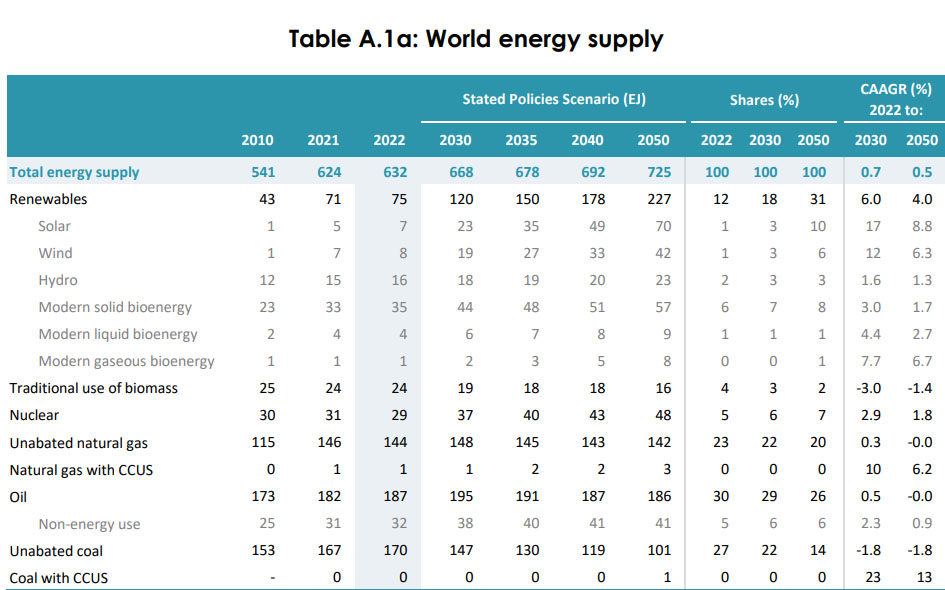
The world is not awash in so called "renewable energy." So called "renewable energy" is trivial.
Another big lie is that so called "renewable energy" is "cheap." It is not. It is absurdly expensive given that it has proved to be a useless reactionary enterprise in addressing environmental catastrophe:
The amount of money spent on so called "renewable energy" since 2015 is 4.12 trillion dollars, compared to 377 billion dollars spent on nuclear energy, mostly to keep vapid cultists spouting fear and ignorance from destroying the valuable nuclear infrastructure.
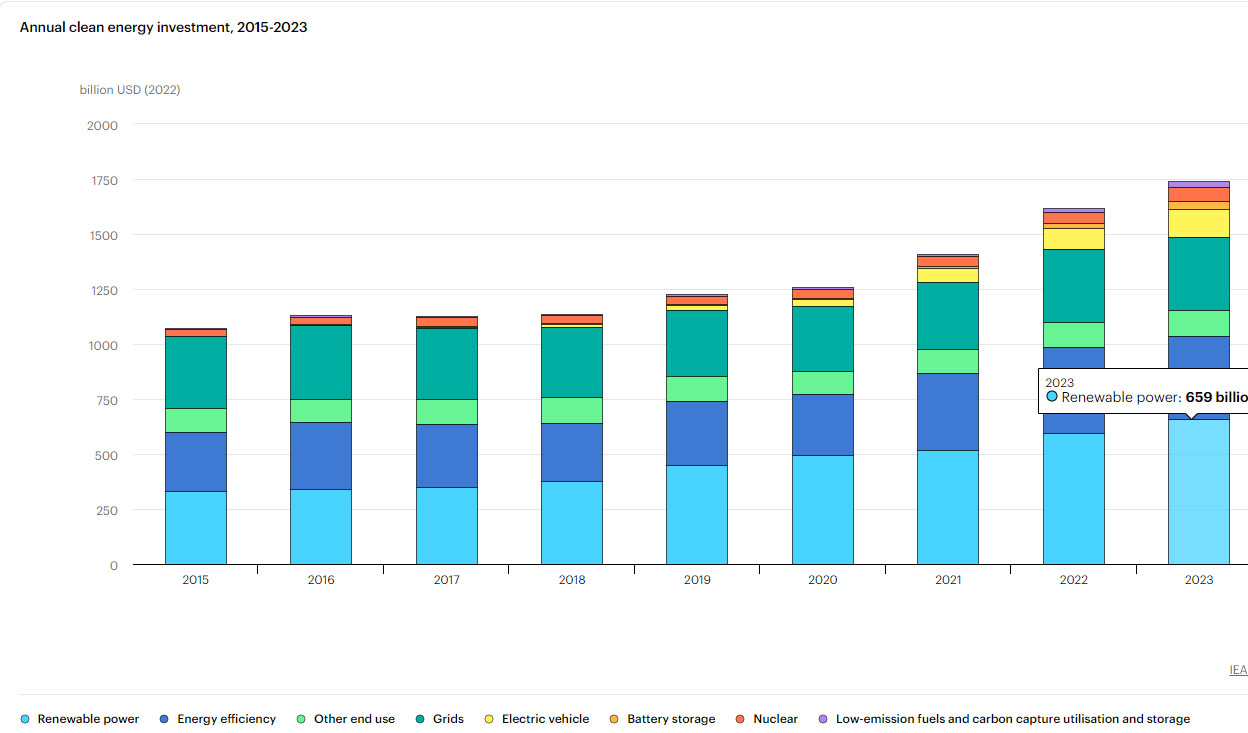
IEA overview, Energy Investments.
The graphic is interactive at the link; one can calculate overall expenditures on what the IEA dubiously calls "clean energy."
A third lie supporting the lie that storing energy is "green" is that it has something to do with fighting climate change, but the reality that things are getting worse faster, despite these vast expenditures reveals this lie for what it is.
Week beginning on August 18, 2024: 422.83 ppm
Weekly value from 1 year ago: 419.25 ppm
Weekly value from 10 years ago: 396.92 ppm
Last updated: August 30, 2024
Update on the Disastrous 2024 CO2 Data Recorded at Mauna Loa
Some text I modify as required for my Mauna Loa CO2 Observatories updates for each in a series of posts I produce here:
Again, things are getting worse faster.
But the real indicator that the storage of energy is anything but green, relates to its mass intensity, and in particular, the toxicology associated with the production of this mass, and the fantasy that recycling this mass - which doesn't really happen on a scale approaching even 90% - is "green."
From the introductory text of the paper cited at the outset:
In the process of dismantling and recycling LIPBs, a variety of heavy metals from cathode materials, fluorine-containing electrolytes in the electrolyte, and toxic and harmful substances such as organic solvents will continue to be released into areas and the surrounding environment, which will cause serious harm to people’s health. (3,4) Although research and understanding of the pollution characteristics and health risks of pollutants in LIPB recycling sites are still very limited, it can be inferred that persistent (in)organic fluorinated chemicals are representative pollutants that should be focused on in recycling sites, based on LIPBs’ components, process flow and toxic effects. (5) Rensmo et al. demonstrated the possibility of perfluoroalkyl and polyfluoroalkyl substance (PFAS) formation and release during LIPB recycling with respect to battery composition and the recycling process (pyrometallurgy, hydrometallurgy), and highlighted the urgent need to investigate emissions of fluorinated substances during LIPB recycling. (6) PFAS have good thermal and chemical stability for reducing the surface tension of liquids and surfaces in the electrodes, binder, electrolyte (and additives), and separator. (7) During the recycling and disposal processes of LIPBs, PFAS may be released either directly or indirectly from the components. Notably, PFAS are easy to migrate and accumulate in different environmental media and organisms and can pose a threat to human health and ecosystem security. However, little information is known about the potential emission and occurrence of PFAS in LIPB recycling areas.
At present, the number of PFAS used in industrial production has exceeded 10,000 with various headgroups and properties. They may transform into one another in the environment, which poses significant difficulties for their detection when only depending on target analysis...
"Targeted Analysis" and "Nontargeted Analysis" are terms widely used in mass spectrometry, a scientific tool which has been the subject of astounding technical developments in the last three decades. Ultimately, at its core, my career is involved with this technology. "Targeted Analysis" is used when one wishes to quantitate a compound that one knows (or expects) to be present. "Nontargeted analysis" is used when one is searching for a plethora of compounds, some of which may not have been known to be present or even not known to exist. It also gives a looser idea of quantitation. The latter is obviously more complex than the first, and involves advanced (and very expensive) instrumentation.
Anyway, it looks like, from a toxicological standpoint, that magical "green" recycling of the much worshipped idea that batteries are "green" has some pretty profound toxicology associated with it.
The authors state that "a large LIPB recycling park located in the southeast of Guangdong Province, China, was selected as the study site."
They then exposed some worms to this mixture to study the biochemistry associated with these compounds.
Some graphics detailing their findings:
A cartoon at the paper's link:
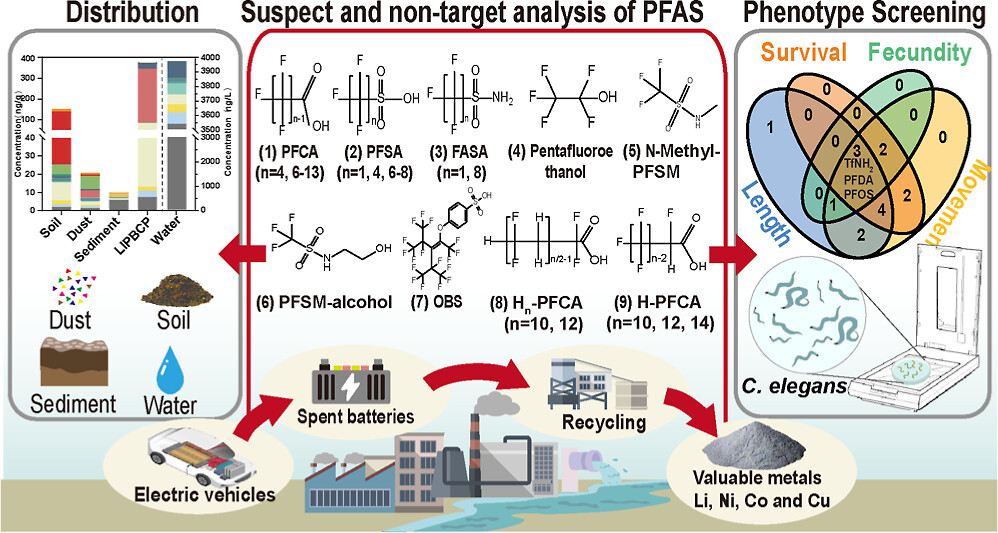
How they performed their work:
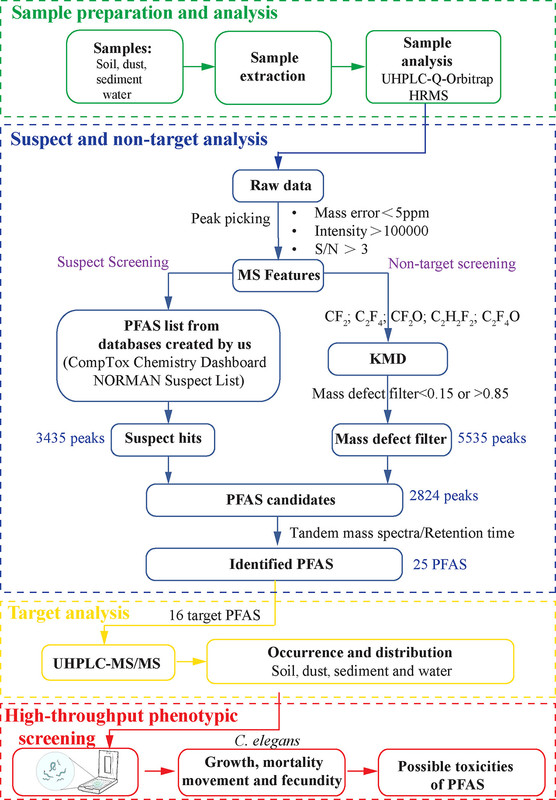
The caption:
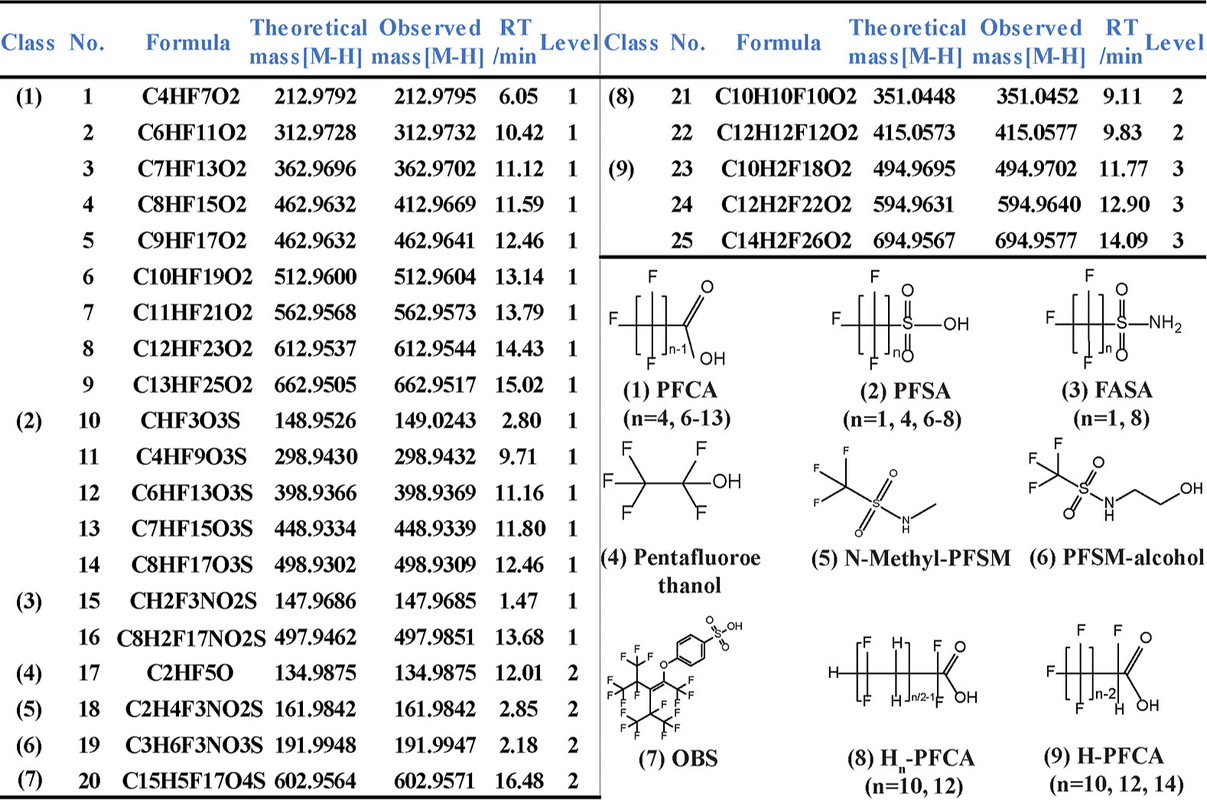
The caption:
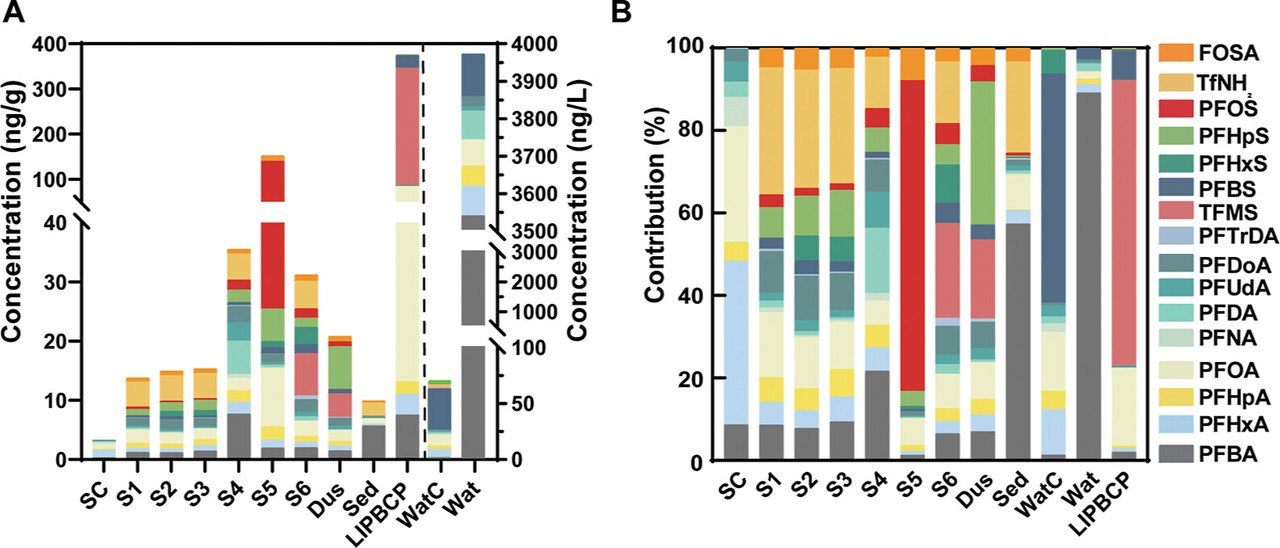
The caption:
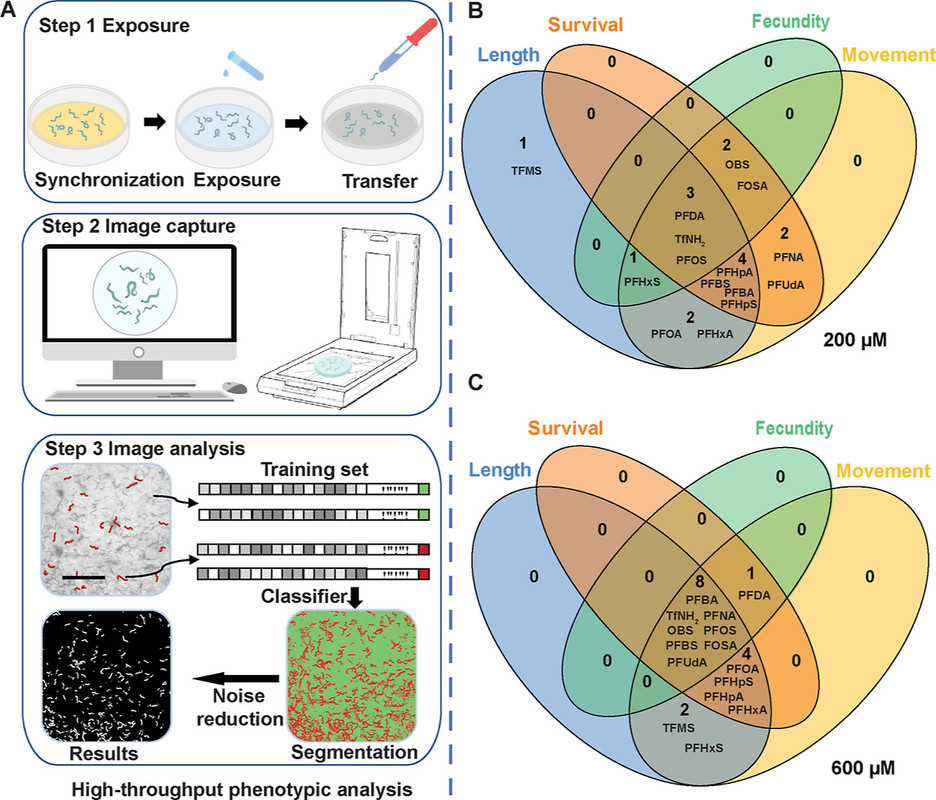
The caption:
I don't know about you, but when I read this paper, I mutter, "...so much for 'green'..."
By the way, one can see around here instances of people selling the big lie that hydrogen is "green" - I regard the "hydrogen is 'green'" myth as fossil fuel rebranding - pointing to instances of the flammability danger of batteries, which is, of course, real, but hardly common. (The smoke from burning batteries should be regarded as highly toxic.) There is even emotive discussions of cats being burned to death in a Tesla flameout in a garage. Speaking only for myself, I'm not sure the cats would have done better in a hydrogen explosion. Stored energy is inherently dangerous. It should be obvious, but somehow isn't, that gasoline is stored energy, the storage of hundreds of millions of years of the solar flux, and yes, gasoline is dangerous. Only a fool would say it isn't.
It is notable that hydrogen fuel cells are reliant on fluorine based organic chemistry.
I trust you will enjoy the holiday weekend.
al bupp
(2,391 posts)Thank you for taking the time to put it together for us.